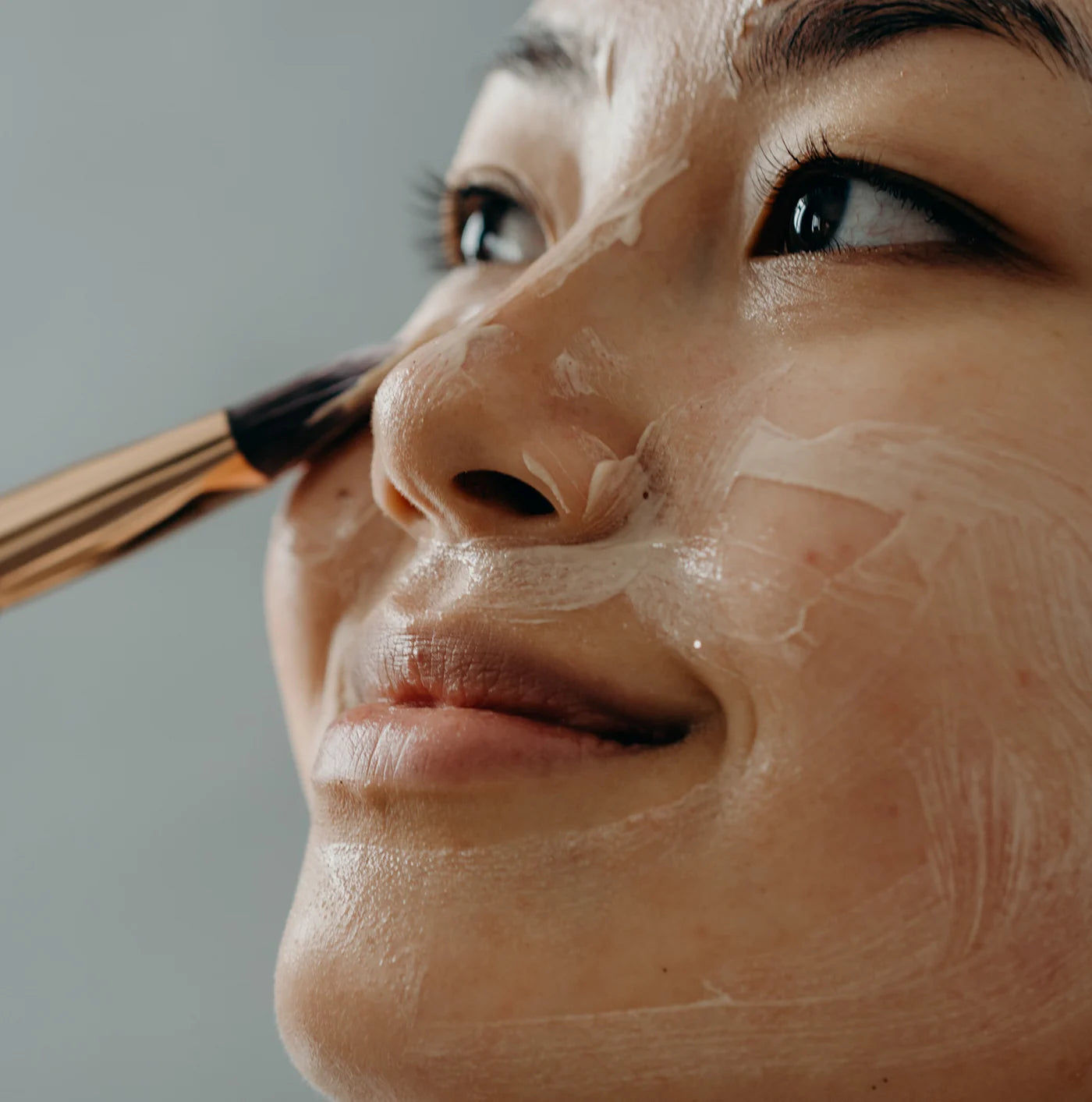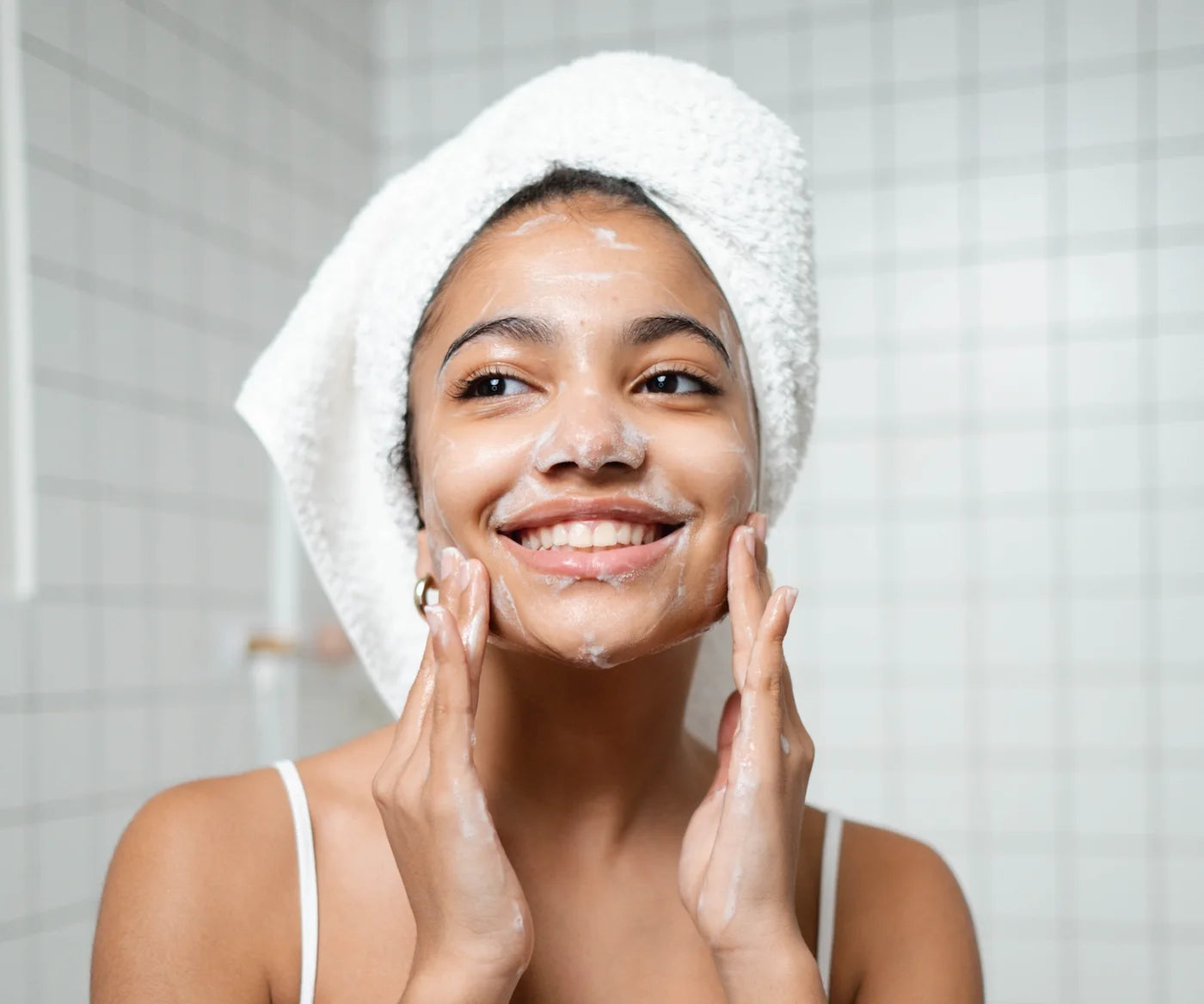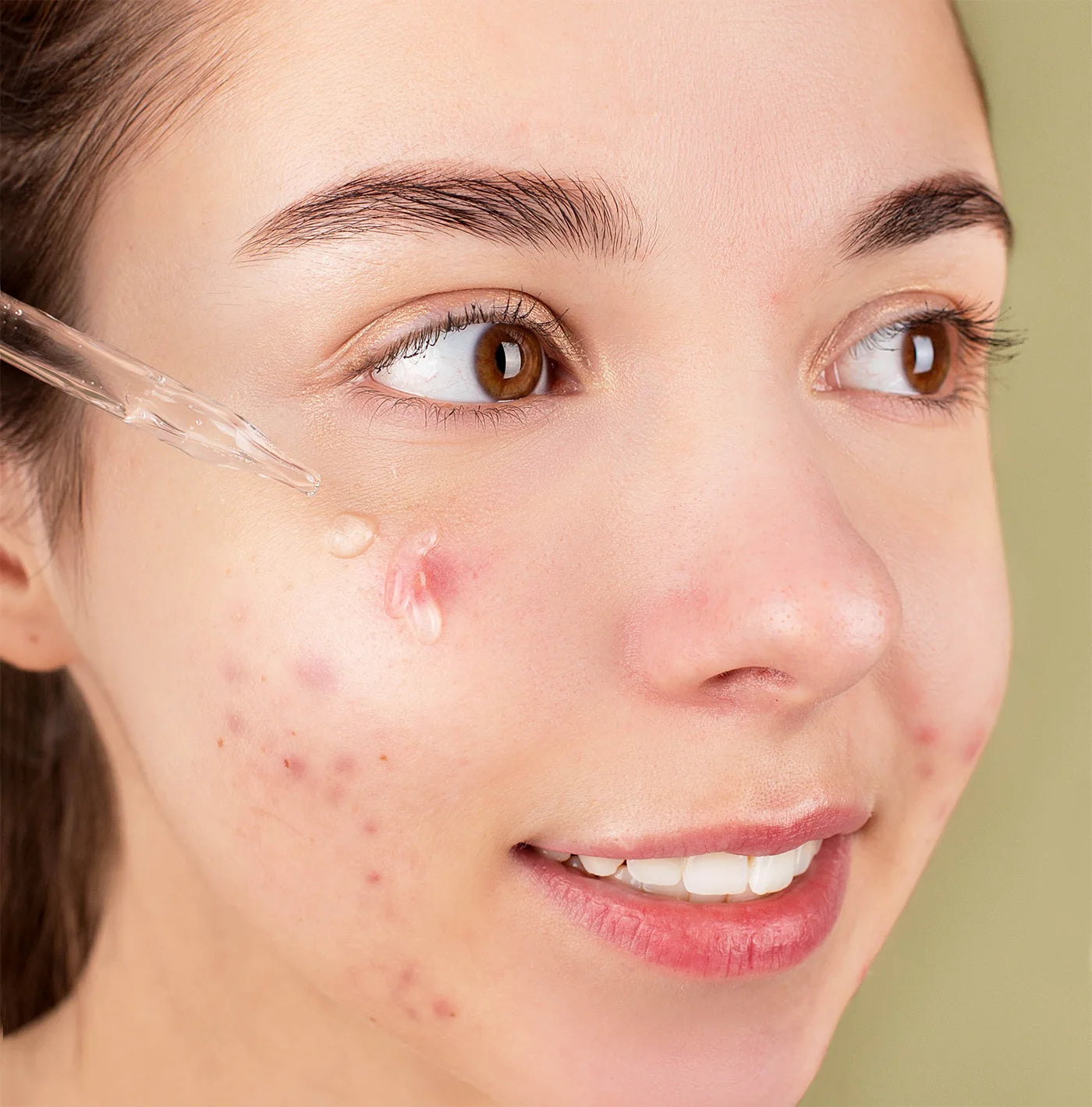If you’re trying to achieve youthful and radiant-looking skin then exfoliating your skin regularly is an absolute must! So where do you even begin? Should you use a physical or chemical exfoliant?
Don’t worry, we’ve got you covered!
In this article, we’ll explain why you need to exfoliate, the difference between chemical and physical exfoliation, and how to add exfoliation into your skincare routine. Let’s get started…
What Is Exfoliation And Why Should You Do It?
Your skin naturally exfoliates itself through a process called cellular turnover where new skin cells are created and brought to the surface of your skin to be shed. This all happens in your epidermis, the outer layer of your skin that protects your body from the outside world.
Your epidermis itself has four sub-layers:
- The basal layer
- The spinous (or squamous cell) layer
- The granular layer
- The stratum corneum (your skin barrier)
New skin cells (keratinocytes) are created in your basal layer before moving up through the spinous and granular level. As they move toward the surface of your skin, your skin cells become tightly attached to each other which helps increase the overall strength of your skin.
In the granular layer, your skin cells produce important fats, proteins, and sugars before they begin to lose their activity and flatten out to form corneocytes.

Corneocytes are skin cells that have lost their nucleus (i.e. they are dead) and make up your skin barrier (the stratum corneum). They’re attached to each other by little bonds called corneodesmosomes which have to be broken down in order for them to be shed from the surface of your skin.
Babies and young children have a quicker cellular turnover process than adults due to how fast they grow - one of the main reasons their skin is so dewy and soft.
Research also suggests that you shed more skin cells in summer than in winter and more quickly from your face than your body.
When cellular turnover is slower, it causes dead skin cells to build up on the surface of your skin which distorts your skin from reflecting light properly and leaves you with a dull and tired complexion.
It can also lead to issues like clogged pores, breakouts, and uneven skin texture.
Regularly exfoliating helps break down the bonds that hold your dead skin cells together so that they are looser and easier to shed. This helps to:
- Brighten skin
- Unclog pores
- Improve skin texture
- Fade hyperpigmentation
There’s more than one way to exfoliate your skin though…
Physical vs Chemical Exfoliation
When it comes to exfoliation, there are two main options; chemical and physical.
Chemical Exfoliation
Chemical exfoliation involves the use of gentle acids or enzymes to help dissolve the bonds that hold your skin cells together. The most frequently used acids are alpha-hydroxy acids (AHAs) and beta-hydroxy acids (BHAs).
AHAs are thought to break down the bonds by removing calcium ions which makes the bonds much weaker.
Examples of AHAs include:
- Glycolic acid
- Lactic Acid
- Malic Acid
- Tartaric Acid
- Mandelic Acid
- Citric Acid
They’re useful ingredients for improving fine lines, wrinkles, and hyperpigmentation, and can help hydrate skin.
Glycolic acid is the most researched among the AHAs which means that it’s the most proven AHA. All AHAs can cause skin irritation. However, this is dependent on product formulation.
Our Night Renewer and Super Smooth serum have both been formulated with a whole host of soothing ingredients so that you can get all the benefits of glycolic acid without the irritation.
Salicylic acid (commonly known as BHA) offers similar benefits to AHAs but is oil-soluble which means that it's able to penetrate your congested pores and unclog them. Salicylic acid can also reduce oil production which makes them a great option for oily and acne-prone skin.
Our Super Smooth serum contains both AHA and BHA so that you can get the best of both types of acids without over-exfoliating your skin.

Physical Exfoliation
Physical exfoliation involves using abrasion to buff away dead skin cells. It’s often considered to be a more aggressive way of exfoliating skin but there are plenty of physical exfoliants that are gentle enough for sensitive skin.
Examples of physical exfoliants include:
- Facial scrubs
- Wash cloths
- Konjac sponges
- Body/facial brushes
There are two benefits to physical exfoliation that you don’t usually get with chemical exfoliation…
Firstly, because you are physically removing the dead skin cells, your skin is instantly softer and smoother after each use.
Secondly, after exfoliating, your other skincare products are more easily absorbed into your skin which can increase their effectiveness.

Our Deep Exfoliator contains a gentle physical exfoliant alongside salicylic acid so that you can get the benefits of physical and chemical exfoliation from one well-formulated product.
It also includes pulverized clay to draw out impurities and absorb excess oil, as well as niacinamide, glycerin, allantoin, and vitamin E to restore moisture and nourish your skin.
How To Add Exfoliation Into Your Skincare Routine
Physical and chemical exfoliation differ slightly in how they should be added into your skincare routine.
As physical exfoliation removes dead skin cells instantly, you should avoid using it too frequently otherwise your skin may end up damaged and irritated. For example, we recommend using our Exfoliator 2-3 times per week at most. Weekly use allows for better use of your other skincare products, making your skincare routine that much better for you.
Most chemical exfoliants should only be used at a maximum of 3 times per week. However, as mentioned earlier, our Night Renewer and Super Smooth serum have both been formulated in a way that allows for daily use.
If you’re worried about irritation or have particularly sensitive skin, we recommend using the Super Smooth serum on alternating nights for the first month then switching to nightly use if your skin is feeling ok.
Chemical and physical exfoliation only help with the second phase of cellular turnover - the shedding of dead skin cells. You can increase cellular turnover further by including a retinoid in your routine alongside your exfoliant.
Acids and retinoids actually work better when used together!
We recommend using our Super Smooth serum with our award-winning Moonlight retinal serum for the best results. Both are gentle enough to be layered together but we advise using them on alternating nights to begin with.
When using any type of exfoliant, it’s important to make sure you are wearing sunscreen everyday. This is particularly the case with AHAs as they increase your skin’s sensitivity to the sun.
Our Sun Protector is a 100% mineral sunscreen with vitamins C and E for added antioxidant protection. Apply it every morning as the last step of your AM routine (after moisturizer but before any make-up).


